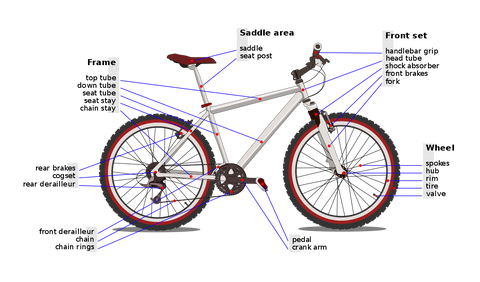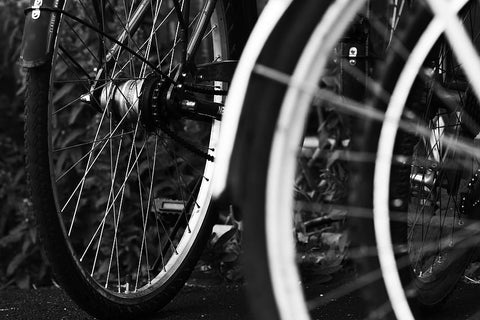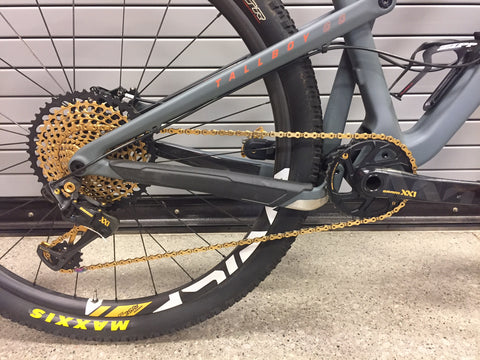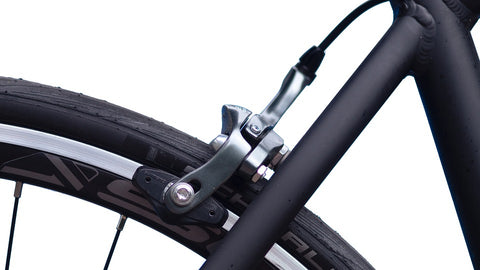Bicycles are today one of the most popular vehicles to take on the road. Many biking enthusiasts have popped up in the last 50 years, totally revamping the bike design and the capabilities. After the 1950s, the bike designs such as road bikes, tour bikes, mountain bikes and even more popped up. But, most of these different designs share the same core components. In the next paragraphs, you will learn all about how bikes are designed, and the core components that comprise an individual bike.
So, sit tight, and brace yourself for an educational ride!
The Core Parts of a Bike

Before we get on with how bikes are designed, knowing the core parts is essential, as these are going to an actual design process. Without further ado, here are the core components of a bicycle:
- The Frame
- The Wheels
- The Drivetrain
- The Brakes
Of course, a bicycle is so much more than these four main parts. However, let’s break down the design of these four core parts, as all the other components will come to mention here!
The Bicycle Frame

This is the most important part of the bicycle, that makes it actually functional. It is the core of each bicycle, as it connects all other parts and components.
The frame is made of tubes, and there are some meticulous design choices we need to make in order for the bike to be appropriate for riding. Regular frame tubing uses low-carbon steel, while higher-quality bikes use aluminum or alloy steel. Of course, the material that is utilized in the creation of the frame should consider the aimed strength and weight of the bike.
The most common design of the frame that you are going to see is the diamond frame. Two triangles of tubing form this diamond shape - the main triangle, and the rear triangle. So, the main triangle comprises of the top, seat, and down tubes. On the other hand, the rear triangle consists of the seat tube, chainstay, and seat stay.
Actually, there is no standard when it comes to frame design. There are countless amounts of bike types, each with their own individual frame design. Just take a lady’s bike and mountain bike frames for example. The lady’s frame has a lower top tube for better comfort, while most mountain bikes utilize a rotated rear triangle for better suspension.
The Bicycle Wheels

Because of the wheels, bicycles got their name. Each bicycle has two wheels, hence the prefix “bi”.
What is the composition of an individual bicycle wheel? It consists of a hub, a rim, spokes, tire, and a tube. You may ask what is the connection with each of these parts of a bicycle wheel? Well, the rim contains the tire, while the spokes are put between the hub and the rim. Of course, the hub is connected to the tube which will hold everything together.
When it comes to design, there are specific things to consider here. First of all, we need to adjust the rim diameter, which varies from 14 to 27 inches, to the frame of the bike. Secondly, we need to take the rim width, which varies from 0,8 to 1,6 inches, into consideration too.
Basically, we need to adjust the bike wheel design according to the bicycle type we want to design.
The Bicycle Drivetrain

Many different bicycle designers have tried to make efficient ways to transmit the kinetic energy of the rider to the actual bike. Nevertheless, the most efficient way, both in functionality and cost, is the chain drive.
Now, what is the composition of the chain drive? To put it shortly, the chain drive consists of derailleurs or integral hub gears. These two help the bike riders to adjust their pedaling speed to changing terrain types.
There are two derailleurs on the chain drive - the rear and the front. The rear one moves the chain from an individual rear sprocket to the next one. On the other hand, the front derailleur moves the chain from an individual front chain wheel to the next one.
Variable sizes of the chain wheels and sprockets result in faster or slower turning times of the rear wheel. Most modern bikes today utilize 10 sprockets and 3 chain wheels, that gives a maximum of 30 different gear proportions.
When it comes to internal hub gears, they provide a bit fewer gears than the derailleurs, up to 14 maximum. That fact makes them less efficient than derailleurs.
The Bicycle Brakes

There are different types of brakes that completely depend on the type of bike. For starters, we have coaster brakes that utility bikes use. You just need to backpedal to use this kind of brake.
Another old-fashioned brake type is the rod brake. This kind of brake is widely spread across developing countries. So, the brake works in a way that rods connect the handlebar levers to stirrups. The stirrups then pull pads of resistant material against the inner part of the rim, essentially breaking.
Most other bikes use front and rear brakes that are activated with cables. These cables are connected to brake levers on each handlebar. We have two types of these brakes - the caliper brakes and drum brakes.
Caliper brakes work in a way that they compress two pads against rim sides. Drum brakes, on the other hand, press two arcs of resistant material against the inside of the steel rim connected to the hub. The drum brakes are less common of the two.
Also, another brake design to mention is the disc brake, utilized mainly by mountain bikes. Instead of compressing against the rim, this kind of brake clutches against a metal disc.
__________
We hope that now you know something more about how are bikes designed! There are numerous different bike types, but they all share the same core parts. Some parts have different design choices, according to the requirements of an individual bike type. Bike design is an exhilarating and long process, and it is great to know a bit about the core design elements of each bike!
We at Disrupt Sports can design and deliver you the highest quality custom bikes, from custom BMX bikes, custom Fixie bikes, custom Ladies bikes, and custom Beach Cruiser bikes. All of these bikes can be personalized according to your taste. We can deliver these designs to your doorstep.
If you have any questions on how are bikes designed, feel free to reach us out via email or live chat!

